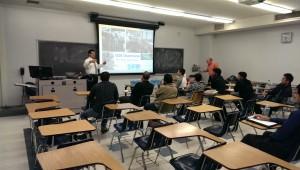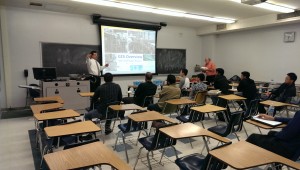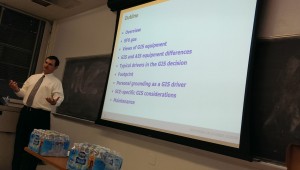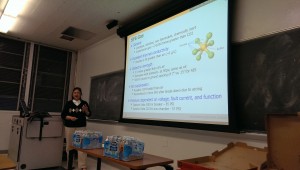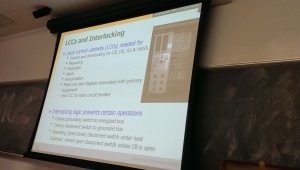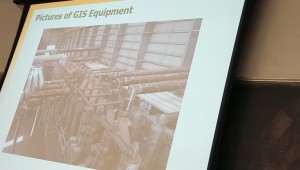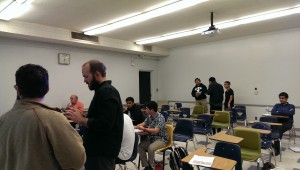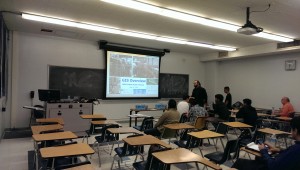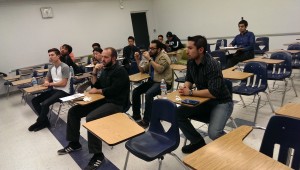Report: IEEE PES Talk at CalPoly Pomona on the topic “An Overview of GIS Substation Engineering”
| May 26, 2015 | Posted by Frank Gomez under EmpNet, General, PES |
Comments off
|
IEEE Foothill Society PES chapter and IEEE PES student chapter, Cal Poly Pomona sponsored a talk on the topic, an overview of GIS substation Engineering, by Mr. Tom Antonucci for the benefit of IEEE, particularly the student members, with an interest to Power Systems. This talk was one of the
series of talks on Power Systems engineering the IEEE Foothill Society PES chapter has planned for the student chapter members.
The talk has generated quite an interest in the CalPoly student chapter members of IEEE PES. That was evident in their presence at the talk. Overall about 20 IEEE members attended the talk, comprising of student chapter members, IEEE Foothill Society members, and IEEE members from Southern California Edison.
Tom Antonucchi presented a contrasting view of convention substations which are also termed as AIS (Air Insulated Substations) to that of GIS (Gas Insulated Substations. Couple of the interesting facts drawing a contrast between the two were following.
Pros:
1. GIS substations occupy 1/5 the of space to that of the conventional AIS substations due to better insulation offered by pressurized gas.
2. Pressurized SF6 (Sulpher Hexa Floride) gas offers higher insulation and better arc quenching property than conventional air insulation.
3. Due to the incentives in compact design, GIS is preferred option where space concerns are major issues (congested city environment).
4. Higher equipment life due to protected environment (Pollution, salt, snow, wide temperature fluctuations) and low frequency of maintenance
5. Reliable and manageable personal grounding
Cons:
1. Due to its compactness GIS substations also have some major disadvantages. One of them is the longer down time for big repairs, due to space constraints.
2. Initially higher cost of equipment
GIS substations have bus chambers, and chambers for Circuit breakers, circuit switchers operating under SF6 gas insulation. The chambers have viewing port for physical observation of contacts status apart from electronic display. SF6 gas pressure is continuously monitored and low gas pressure cause alarms and low-low gas pressure cause tripping of the equipment. If Breaker contacts fail to open, then Breaker failure back up protection steps in. SF6 gas being heavier than air, Gas pressure sensors are placed at near ground level.
Due to pressurized gas environment, equipment switching coordination must be strictly and closely monitored. That prompted for a view port design for the gas chambers. Gas pressure is dependent on operating equipment voltage, function and fault current interruption specification.
For example 500kV Bus chambers are typically designed for 57 PSI pressure, where as 500kV breakers are typically designed for 85 PSI.
Presentation slides also included some pictures of a typical GIS substation.
The presentation generated lot of questions from the audience. That indicated the level of interest on the topic. There was no representation either from Devry, UCR, or Harvey Mudd student chapters. Which prompted a decision to hold the next talk at UCR campus.
